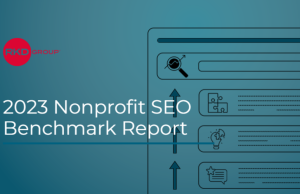No matter where they’re located, it’s difficult for nonprofits to escape the impact of the coronavirus pandemic (COVID-19). Surveys from around the country indicate that the vast majority of organizations have seen a spike in demand for services and a need for flexible funding and stability.
Almost half of respondents (49 percent) to the COVID-19 Nonprofit Pulse Survey by Austin, Texas-based Mission Capital said they’ve seen an increased demand for services or support from clients and communities. Almost 36 percent reported a significant expansion in the types of needs your clients or communities have.
One-quarter of 458 respondents reported reduced employee hours or furloughs or layoffs, and another 22 percent instituted a hiring freeze. A third of organizations said they could operate another 2 to 6 months at current capacity, assuming no significant additional investment or support, another quarter said they could operate 6 to 12 months. Only 1 in 5 said they could operate more than a year.
The most frequently shared immediate concerns were financial, such as paying for operation, the ability to provide services, and the health and safety of staff, volunteers and people they serve.
The most frequently cited resources that could help nonprofit respondents meet challenges were more funding, funding operations, and flexible funding; resources and funding to support transition to virtual work and service delivery, and support in gaining access to basic supplies.
Of the nearly 350 organizations that responded to a second rapid response survey by The Center for Non-Profits in New Jersey, 96 percent said they are experiencing significant or moderate disruptions to their programs or operations as a result of the crisis, including sizeable portions that are already suffering crippling financial losses and staff layoffs.
More than a quarter of the respondents to “The COVID-19 Crisis and New Jersey’s Non-Profit Community” survey reported having already laid off or furloughed staff, totaling 4,200 positions in 88 organizations. Nonprofits are seeking funding, flexibility and stability, as well as communications, partnerships and professional assistance.
More than half (53 percent) have already suspended some operations temporarily due to lack of funds or government restrictions or safety concerns while 17 percent have suspended all operations. 88 percent said they’ve implemented remote work protocols.
About 22 percent laid off staff or cut staff and another 24 percent have reduced staff hours while an even higher percentage responded that they might do either. 30 percent continued to pay staff who cannot work.
The Massachusetts Nonprofit Network-Philanthropy survey indicated that 58 percent of respondent nonprofits had seen expenses rise as much as 10 percent and another quarter reported increased expenses of 10 to 20 percent. The “Ongoing Impacts of COVID-19 on Massachusetts Nonprofits” received 550 responses.
Almost three-quarters of those surveyed have shifted programs or services provided to clients to virtual formats, and nearly a third reduced hours or pay of staff.
Almost 90 percent said financial relief would help the organization respond to the pandemic while 78 percent said they have experienced a decrease in revenues and 88 percent experienced a disruption of services to clients and communities.










